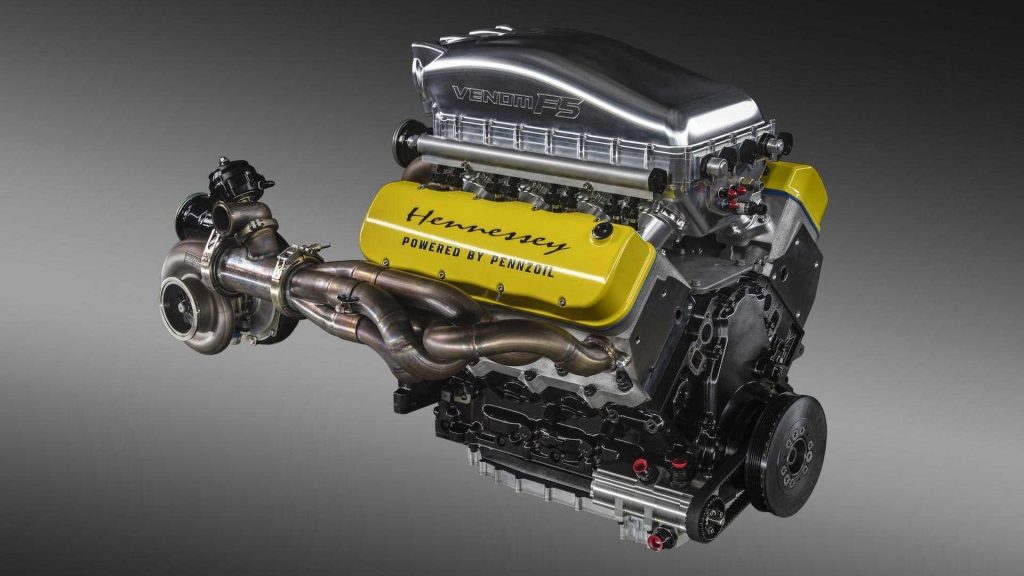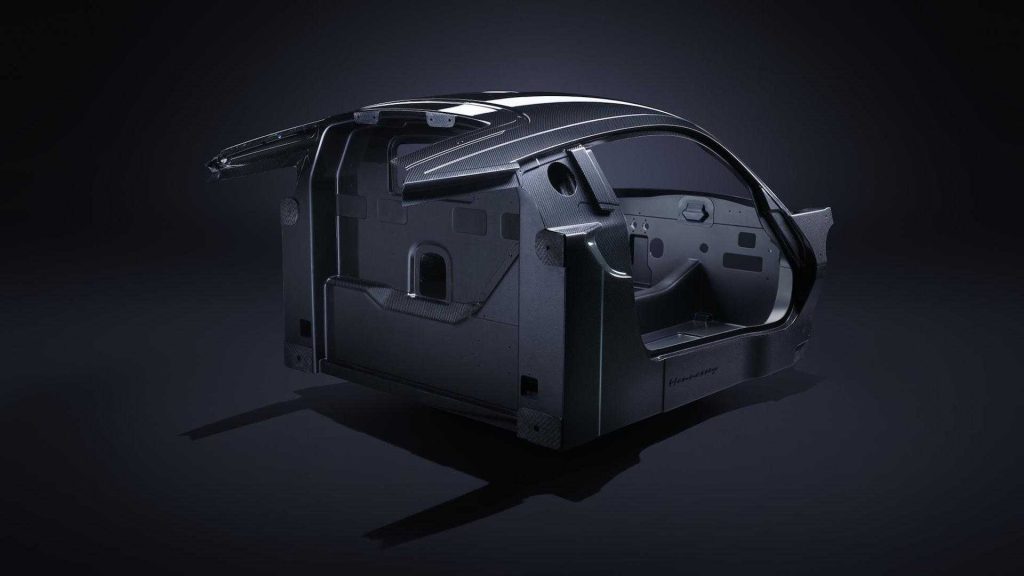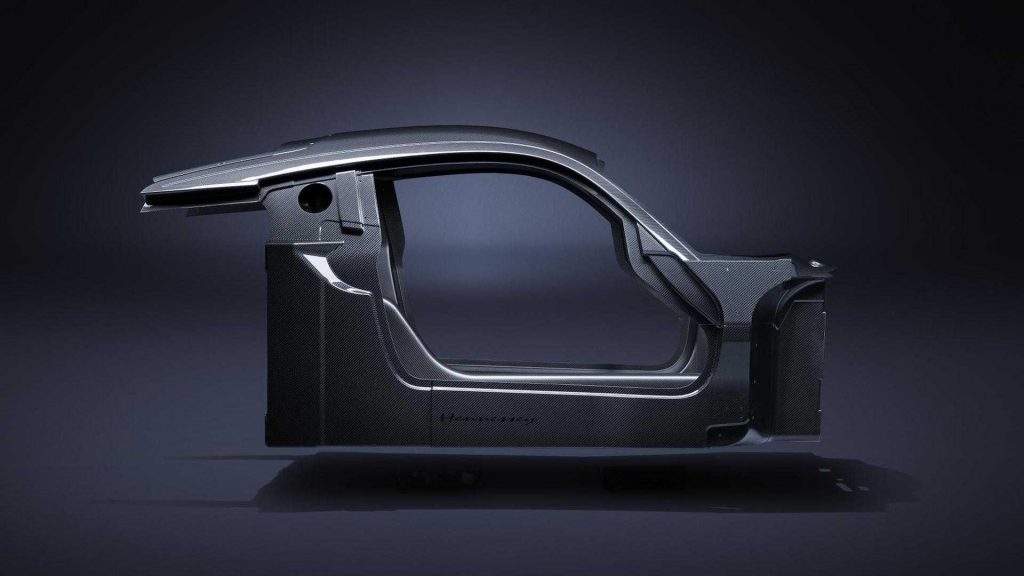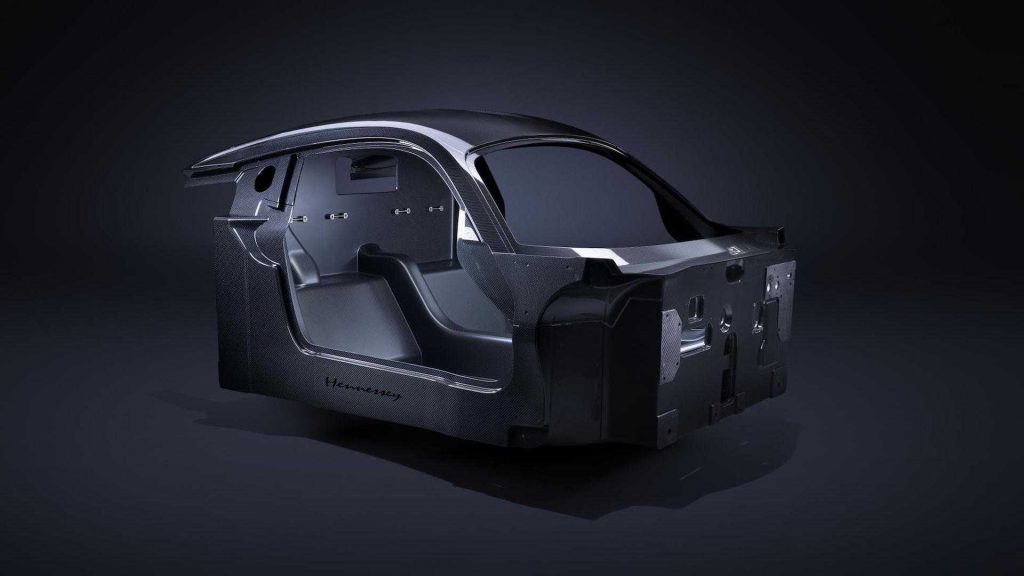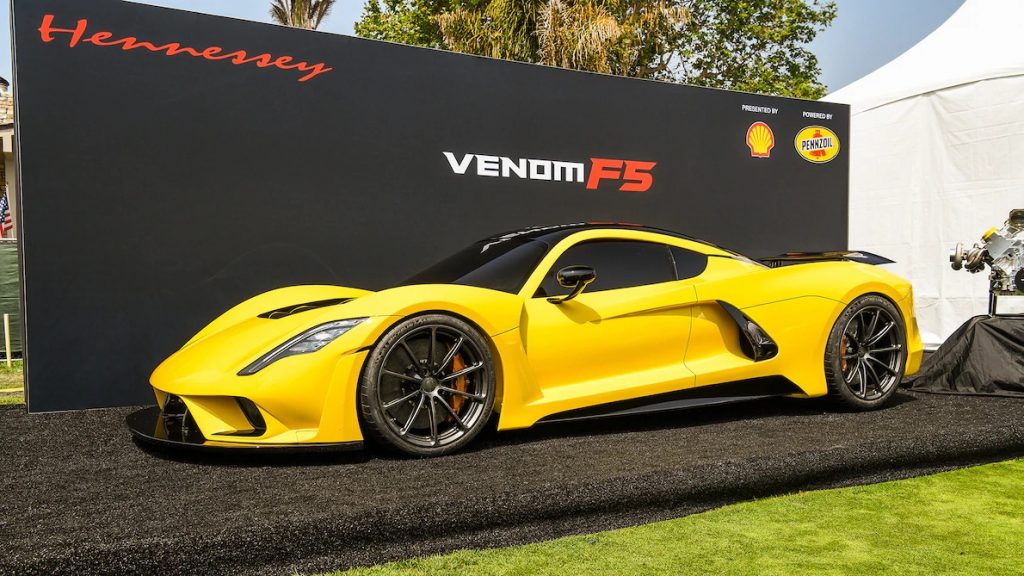
You may remember that last year in September, Bugatti managed to break the mythological 300 mph (482 km/h) speed record with a special Chiron. As you would imagine, such a testimony easily makes a permanent impression, this particular one did not only cause a stir to the competition but to the French hypercar manufacturer as well. Thanks to the extent of the Chiron’s quake, Bugatti has shifted its focus from longitudinal acceleration to look more into cornering capabilities. However, there is one hypercar maker that’s determined overshadow Bugatti’s mark – Hennessey.
The American supercar maker, hypercar maker and tuner has released some significant details of the forthcoming Venom F5 in a short clip on the Top Gear website. Set to go against the Bugatti Chiron, the Hennessey Venom F5 will be the successor to the highly praised Venom GT hypercar. Seemingly then, the Venom F5 will be taking no prisoners as it is, on the face of it, specially engineered to beat the Chiron.
For starters, the Venom F5 consists of a carbon-fibre chassis that’s said to be stiffer than any component the Bugatti Chiron is built on. The torsional rigidity offered by the Venom’s chassis is significantly higher than that of the Chiron’s, this promises better handling and responsiveness. It also allows the suspension to be more efficient as there will be minimum movement in the chassis if any. And let’s not forget that the tub only weighs 86 kilograms.
The stiffness of the Hennessey’s chassis may sound a bit excessive, at least until you find that the Venom F5 will be powered by a 6.6-litre twin-turbo V8 that pushes out nothing less than 1,817 hp (1,355 kW) and 1,617 Nm of torque. On paper at least, the Hennessey looks like it will be sitting at the top of the food chain in the hypercar segment. Hennessey is set to start testing the Venom F5 later this year, but don’t get too excited as prices are sitting at an eye-watering $1.6 million (approx. R22.8 million). Lastly, having those kinds of funds to play around with does not necessarily secure you the car as only 24 examples will be produced, half of these set exclusively for the U.S market.

